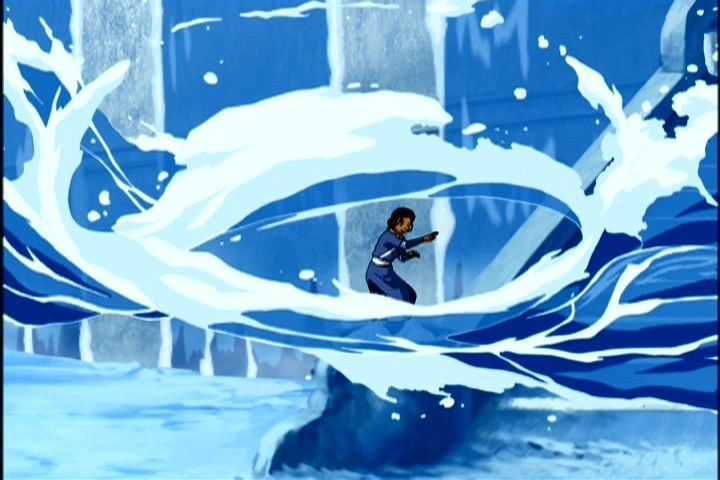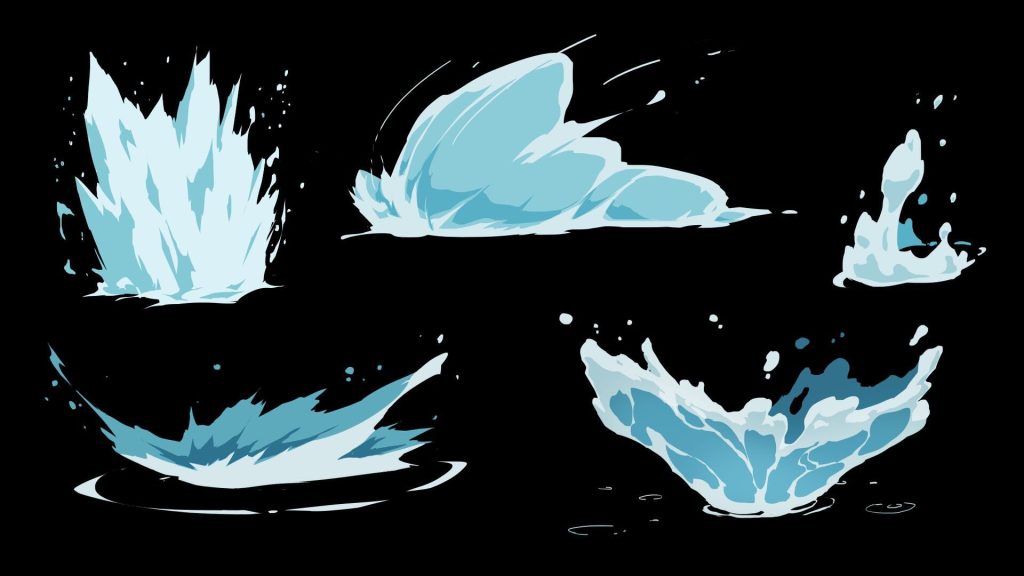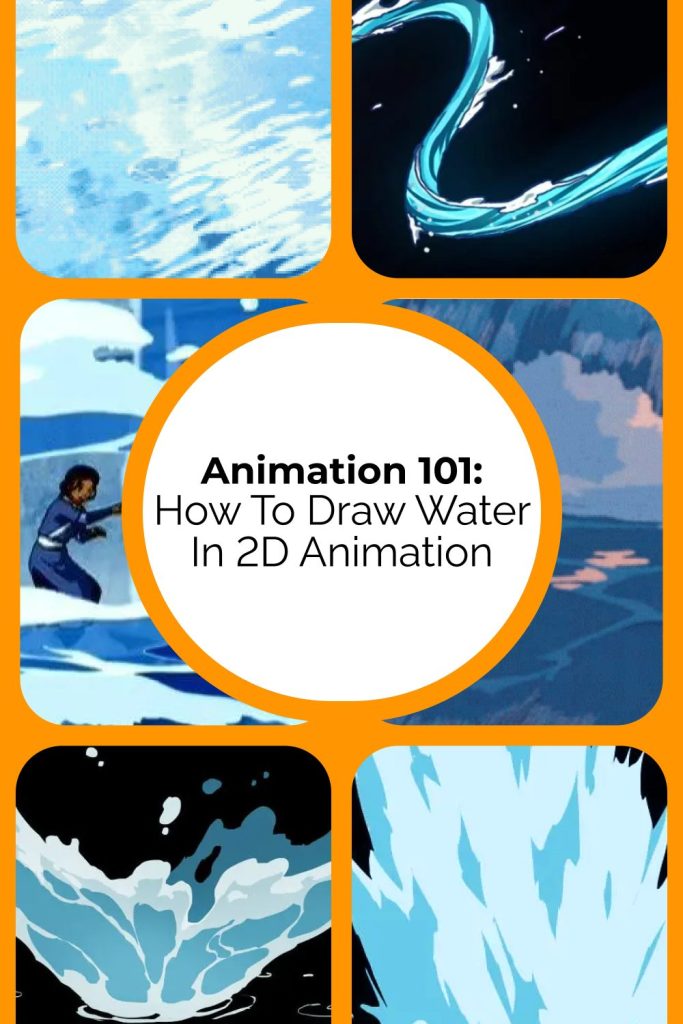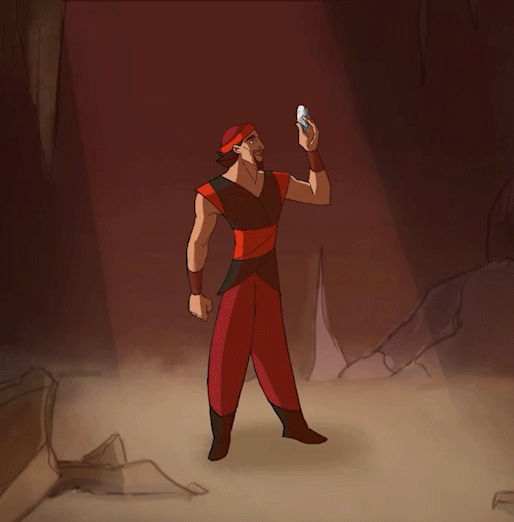Animating water can be one of the most challenging yet rewarding tasks in 2D animation. Whether you’re creating a simple water splash or a complex flowing river, understanding the physics and artistic approaches to water is essential for capturing its dynamic nature. In this post, we will dive deep into the key concepts, tools, and techniques to help you create realistic and stylized water effects in your animations.

Get in on the action by joining the <<Mechanics of motion in traditional 2D animation>> course to learn how to add water FX to your animation
Why Water is So Important in Animation
Water plays a crucial role in visual storytelling, particularly in animation. Whether used for dramatic effect or to enhance the setting, water adds both beauty and complexity to a scene. In animation, the portrayal of water depends on both its physical properties (such as its fluidity and transparency) and the stylistic approach chosen by the artist. Understanding how to animate water effectively can elevate your work from simple sketches to captivating scenes.
The Basics of Water Physics in Animation
When animating water, it’s important to understand its physical properties. Water behaves in specific ways depending on its state: calm, flowing, splashing, or even frozen. In animation, you must capture these qualities while considering the flow of water, surface tension, refraction, and reflection.

Water moves in various ways. It can flow slowly or move violently, depending on its source and the forces acting upon it. The surface tension of water plays a key role when animating splashes or bubbles. Water clings to itself, creating droplets and forming cohesive shapes. In addition to that, water reflects light, creating a unique interplay of highlights and shadows. This becomes especially important when working with water in an animated scene where light plays off the surface. Water also has low viscosity, but its movement can still be influenced by external forces, like wind or magical powers, which can dramatically change its appearance.
How to Create 2D FX: Approaches, Methods, and Tips from Edward Kurchevsky
Key Techniques for Drawing Water in 2D Animation
To begin animating water, the first step is to decide on its movement and form. Water is dynamic and constantly changing, so the key is to focus on the type of action in the scene. When drawing water splashes, focus on capturing the burst of movement. This is similar to a ribbon that stretches and splits as it moves. For slow-flowing water, the shapes should be soft and rounded, creating gentle ripples and smooth transitions. When animating rapid movements, such as water created by explosions or intense magical powers, focus on fast-moving splashes and powerful curves that break apart.

Kimetsu no Yaiba
Water can also be stylized in various ways depending on the mood and tone of the animation. For example, in shows like Avatar: The Last Airbender, water is stylized with strong curving shapes, emphasizing elemental control and power. In Kimetsu no Yaiba, the «Breath of Water» technique is shown as flowing waves, focusing on the force and speed of the attack. Stylized water doesn’t necessarily follow real-world physics but instead, evokes emotion and action. Experimenting with how water interacts with other elements like wind, fire, and magic will help you refine your style.

Avatar: The Last Airbender
Color and Lighting for Water Effects
Water in animation often uses various color gradients and lighting effects to convey its nature and environment. The color can range from pale blue to dark, inky green, depending on the scene’s tone and context. Light plays a huge role in the way we perceive water. Using gradients to create subtle highlights will make your animated water appear more lifelike. Additionally, reflections on the water surface can add depth to the scene. For magical water effects, colors can be enhanced to create a glowing or ethereal effect. By adjusting the color palette, you can give the water a mystical or otherworldly quality.
Electricity in 2D Animation: How to Harness Energy and Make It Part of Your Magic
Creating Dynamic Water Movements
Once you have your basic shapes and colors down, it’s time to make the water move. Dynamic water movements are crucial for bringing realism to your animation. Depending on the type of water you’re working with, you can use frame-by-frame animation to animate individual frames where the water changes gradually. This is especially useful for showing water splashes, ripples, or waterfalls. For smooth transitions, tweening between keyframes can give the illusion of continuous water flow.

This is often used in scenes involving calm rivers or slow-moving streams. Layering multiple elements like splashes, ripples, and foam on top of each other will give water volume and depth. You can use opacity and blending modes to make these layers interact naturally with the background.
Conclusion: Mastering Water in Animation
Mastering the art of animating water is essential for any animator who wants to create dynamic and believable effects. Whether you’re working on an epic battle scene or a serene moment by the lake, water adds depth, realism, and emotion to your animations. By understanding its physical properties, practicing different techniques for stylization, and experimenting with lighting and color, you can create breathtaking water effects that captivate your audience. Use references, explore various tools like Photoshop, and refine your animation techniques – soon, you’ll be able to animate water as if it were second nature!
Join the <<Mechanics of motion in traditional 2D animation>> to improve your FX animation!




